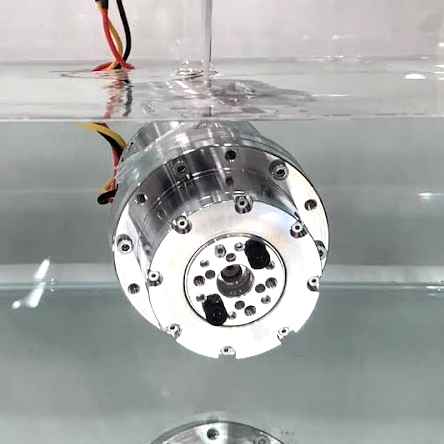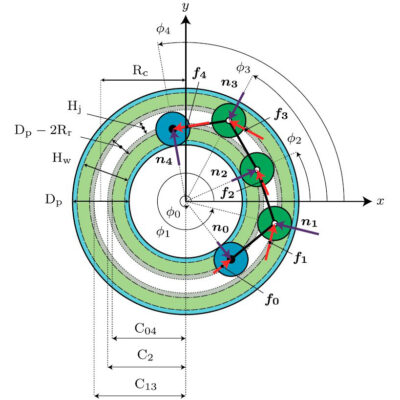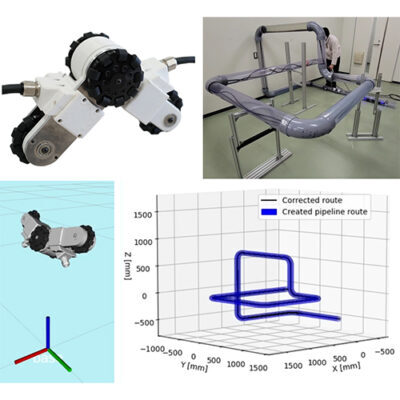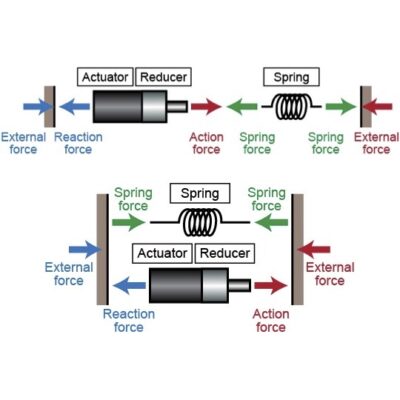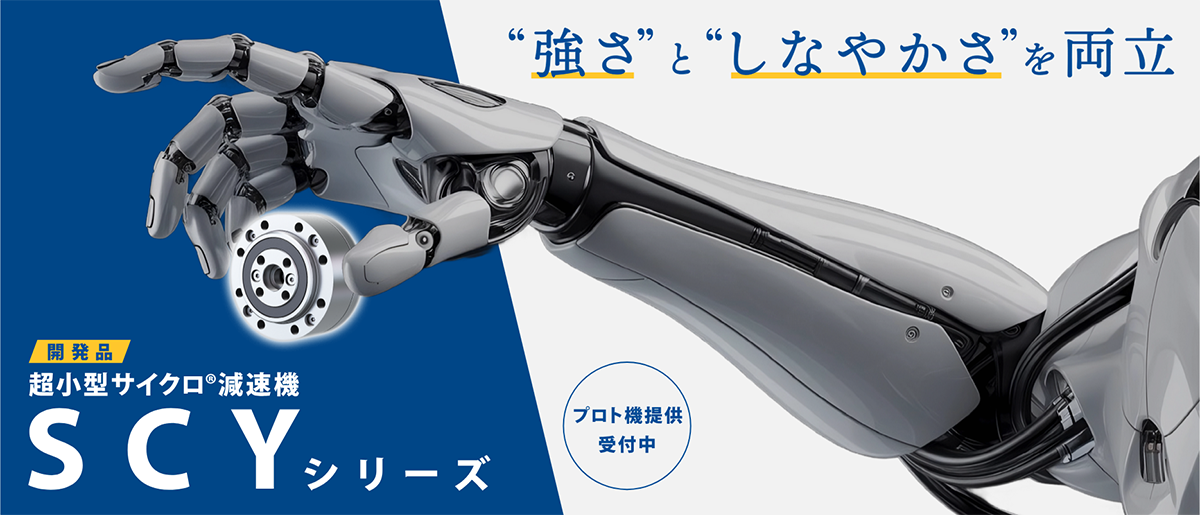Numerous efforts to reduce friction in the sliding parts of reduction gears have been reported to enable robots to perform mechanical contact work. The aim is to reduce energy dissipation in the transmission system and to detect small external forces as precisely as possible by using the motor current sensors, which have been traditionally provided in servo motors for a long time. One of the main features of this system is that the output shaft can be mechanically backdrivable by small external forces. Compared to the force/sensor feedback method and the series elastic actuator have been proposed so far, this system does not require additional elements and has a very simple structure. The joint impedance can also be varied by changing the feedback gain of the position control law.
It has been widely known empirically that the use of involute gears such as spur gears and a reduction ratio of 10 to 1 or less can reduce the effect of reducer friction at the expense of backlash. This method has been previously reported under the names of Quasi-Direct-Drive Motor or Proprioceptive Actuator, as opposed to the Direct-Drive Motor method (DD Motor method), which does not use a reduction gear at all.
On the other hand, even if the reduction ratio is as high as 50 to 1 or more, low friction can be achieved by skillfully designing the tooth shape and surface roughness. Such a technique has been common in the past for small servo motors for radio-controlled vehicles (it is not clear whether this was intended or not). However, this method has recently begun to attract attention as a method for relatively large geared electric servomotors.
In this study, we are conducting research and development on a new robot application method using Cycloidal Drive® with trochoidal tooth profile in collaboration with Sumitomo Heavy Industries, Ltd. In the case of the Cycloidal Drive®, it was found that even if the backlash is reduced to 1 arcmin, the required external force (torque) to reverse-start a geared motor was only 1 Nm or less. A demonstration of force/torque sensorless admittance control using this method was held at the iRex 2022 (International Robot Exhibition 2022) at Tokyo Big Sight.
*Cycloidal Drive® is a registered trademark of Sumitomo Heavy Industries, Ltd.
※本成果は,2019 年度NEDO先導研究プログラム(新産業創出新技術先導研究プログラム)「多能工ロボット実現のための機械的接触基盤ロボット技術開発」の支援を受け,住友重機械工業株式会社および株式会社Keiganとの共同研究や立命館大学グローバルイノベーション研究機構の川村貞夫特別招聘研究教授との共同研究の結果,生まれたものです.
Related works
- 加古川篤,川村貞夫,武居直行,徳永晋也,深澤俊樹,山本章,徳田貴司,栗本直彰,機械的接触を基盤とするロボットの事業化に向けて~低摩擦ギアード電動モータからのアプローチ~,日本ロボット学会誌,39巻,2号,pp. 125-131,2021
- Atsushi Kakogawa, Yoshiki Mori, Toshiki Fukasawa, Kurimoto Naoaki, Shinya Tokunaga, Takashi Tokuda, Akira Yamamoto, Sadao Kawamura, A Highly Backdrivable Robotic Arm using Low Friction and High Accuracy Cycloidal Geared Motors: ALFHA, Proceedings of the IEEE/SICE International Symposium on System Integration (SII 2022), pp. 428-433, 2022
- 加古川篤,深澤俊樹,栗本直彰,徳永晋也,徳田貴司,山本章,川村貞夫,低摩擦ギアードモータを用いた可変剛性ロボットアーム,日本機械学会ロボティクス・メカトロニクス講演会 2021,2P3-I07,2021
- 加古川篤,川村貞夫,徳永晋也,深澤俊樹,山本章,徳田貴司,栗本直彰,武居直行,準DDモータを用いた機械的接触基盤ロボット技術,第38回日本ロボット学会学術講演会,2B3-06,2020
Previous studies that served as references for this study
- D.V. Gealy, S. McKinley, B Yi, P. Wu, P.R. Downey, G. Balke, A. Zhao, M. Guo, R. Thomasson, A. Sinclair, P. Cuellar, Z. McCarthy and P. Abbeel, Quasi-Direct Drive for Low-Cost Compliant Robotic Manipulation, Proc. the IEEE Int. Conf. Robotics and Automation, pp.437-443, 2019.
- P.M.Wensing, A.Wang, S. Seok, D. Otten, J. Lang and S, Kim, Proprioceptive Actuator Design in the MIT Cheetah: Impact Mitigation and High-Bandwidth Physical Interaction for Dynamic Legged Robots, IEEE Transactions on Robotics, Vol. 33, Iss. 3, pp.509-522, 2017.
- H. Matsuki, K. Nagano and Y. Fujimoto, Bilateral Drive Gear- A Highly Backdrivable Reduction Gearbox for Robotic Actuators, IEEE/ASME Transactions on Mechatronics, Vol. 24, Iss. 6, pp.2661-2673, 2019.

